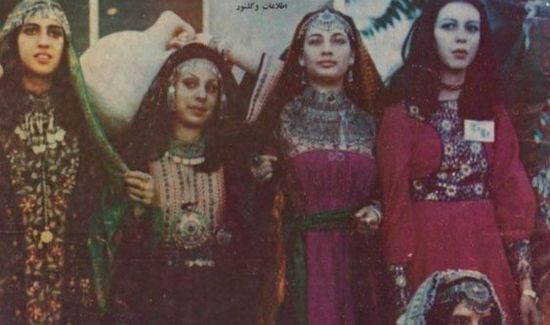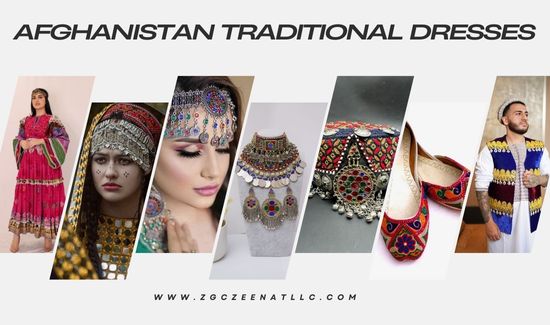Afghanistan’s traditional dresses are more than just clothing; they’re a vivid representation of the country’s diverse history, regions, and cultural pride. Afghanistan traditional dresses varies significantly by region, each with its own unique embroidery, colors, and style that reflect the area’s heritage and the way of life of its people. Afghan traditional dress remains iconic, carrying historical and cultural stories through its intricate designs, bold colors, and unique styling. Afghanistan’s traditional dresses are more than just clothing; they’re a vivid representation of the country’s diverse history, regions, and cultural pride. Afghan traditional dresses varies significantly by region, each with its own unique embroidery, colors, and style that reflect the area’s heritage and the way of life of its people. Afghan traditional dress remains iconic, carrying historical and cultural stories through its intricate designs, bold colors, and unique styling.
Introduction
Afghanistan traditional dresses offer a unique glimpse into the country’s diverse heritage, crafted with precision and artistry that has been passed down through generations. Each piece of clothing tells a story, embodying cultural symbolism, local identity, and the beauty of Afghan heritage. Afghanistan traditional dresses not only reflects the ethnic diversity of the country but also showcases its artistic prowess. These outfits are carefully adorned with vibrant colors, beautiful embroidery, and intricate patterns, each carrying cultural meanings that add to the depth of Afghan identity.
History of Afghanistan Traditional Dresses

The history of Afghan attire is as diverse as its people. The region, historically situated along the Silk Road, has seen influences from Persia, Central Asia, and South Asia, leading to a unique blend of cultural elements in Afghan clothing. Over centuries, the various tribes and ethnic groups, such as Pashtuns, Tajiks, Hazaras, and Uzbeks, developed distinctive clothing styles, each resonating with their unique cultural heritage. This blend of influences is evident in the diversity of fabrics, colors, and embroidery techniques seen in Afghan traditional dress today.
Materials and Fabrics in Afghan Clothing
Afghan traditional attire is typically made from natural materials that suit the country’s climate. Cotton is widely used, especially in warmer regions, while wool and silk are preferred in colder areas. Woolen fabrics keep the people warm in mountainous regions, while lighter cotton suits the warmer lowlands. Modern Afghan designers are increasingly combining traditional fabrics with newer materials to make clothing both practical and appealing.
The Diversity of Afghanistan Traditional Dresses
Afghanistan’s rich cultural tapestry is reflected in its clothing, with each ethnic group having its own distinctive attire. Afghan traditional dresses differ between regions, with noticeable variations in embroidery, colors, and accessories. Pashtun attire, for instance, emphasizes bold colors and simple cuts, while Hazara clothing features detailed embroidery. Tajik and Uzbek attire showcase unique craftsmanship and influences from Persian and Central Asian styles, creating an unmatched diversity within Afghan traditional clothing.
Pashtun Afghanistan Traditional Dress
Pashtun traditional attire typically consists of loose-fitting trousers and a long tunic or dress. The “Kameez” and “Salwar” combination is common among Pashtuns, usually paired with a shawl or a chador. Known for vibrant colors, Pashtun women’s dresses are often decorated with bright embroidery and occasionally adorned with coins or metallic details. For men, the iconic Pashtun turban adds to the ensemble, showcasing elegance and cultural pride.
Hazara Traditional Dress
Hazara clothing is renowned for its fine embroidery and unique patterns, particularly around the sleeves, neck, and waistline. Women’s dresses are often long and intricately embroidered, typically in dark colors with contrasting bright thread. The Hazara community’s attire reflects their Mongolian heritage, setting it apart with its colorful yet dignified designs. Men’s clothing often includes a woolen “chapan” (coat) and a “pakol” hat, especially in colder regions.
Tajik Traditional Dress
The Tajik traditional dress is characterized by elegant and delicate embroidery. Tajik women’s attire, often in shades of red, white, and green, features long, flowing dresses with beautiful embroidery patterns. Headscarves are common, often tied around the forehead with decorative pins. Men’s clothing includes a loose-fitting “shalwar kameez” and sometimes a waistcoat or chapan, giving Tajik attire a blend of formality and comfort.
Uzbek Traditional Dress
Traditional attire in Afghanistan shows a strong influence from Central Asia. Uzbek women’s dresses are often colorful and made from silk, adorned with intricate embroidery. The use of Ikat patterns in fabric is also prevalent among Uzbeks. Uzbek men typically wear a chapan and a turban or a cap known as a “doppa,” showcasing their unique cultural touch within Afghan attire.
Unique Elements of Afghanistan Traditional Dresses
Afghan women’s clothing often includes a headscarf, shawl, or veil, which is traditionally worn as a mark of respect. Jewelry also plays a significant role, with women adorning themselves with earrings, necklaces, bracelets, and anklets made from silver, gemstones, and glass. These accessories aren’t just decorative—they hold cultural significance and reflect a woman’s identity, marital status, and heritage.
The Traditional Afghan Chapan
The chapan, a long, colorful coat often lined with warm materials, is a staple in Afghan clothing. It is commonly worn in colder regions and is especially popular among men. The chapan’s unique stripes and embroidered detailing make it one of the most recognizable pieces in Afghan fashion, often worn by men as a sign of elegance and heritage.
The Afghanistan Turban and Hat
Afghan headwear varies significantly by region. The “pakol” hat, a soft woolen cap, is commonly worn in mountainous areas and by certain ethnic groups like the Hazaras. The “karakul” hat, typically made from sheepskin, is another popular choice. Turbans, too, are essential in Afghan attire, especially among Pashtun men, symbolizing respect and cultural pride.
FAQs
- What is the significance of colors in Afghan traditional dresses?
Colors in Afghan traditional attire hold cultural meanings. For instance, green symbolizes nature and peace, red stands for courage, and blue is often associated with spirituality and tranquility.
- What materials are commonly used in Afghan clothing?
Traditional Afghan dresses are typically made from cotton, silk, and wool, suited to the country’s climate. Wool is preferred in colder regions, while cotton and silk are used in warmer areas.
- How does Afghan attire differ between ethnic groups?
Each ethnic group in Afghanistan has its unique style of dress. Pashtuns, Hazaras, Tajiks, and Uzbeks, for example, have distinct clothing that reflects their cultural heritage, from colors to embroidery styles.
- Why do Afghan women wear jewelry with traditional dresses?
Jewelry is more than decoration in Afghan culture. It symbolizes identity, cultural pride, and status. Afghan jewelry is often made from silver and adorned with gemstones, adding elegance to traditional attire.
- What is the Afghan chapan?
The chapan, a long coat primarily worn by Afghan men, especially in colder regions, features vibrant stripes, warm lining, and intricate embroidery. This iconic garment provides both warmth and a display of Afghan craftsmanship. Afghan men especially favor it for its durability and cultural significance in colder areas.
- Can Afghan traditional dresses be worn for modern occasions?
Yes, many designers are adapting Afghan traditional styles to create modern versions suitable for contemporary fashion, making it easy to incorporate Afghan heritage into everyday wear.
Conclusion
Afghanistan traditional dresses are a testament to the country’s rich heritage, cultural diversity, and craftsmanship. Each piece, from the chapan to the pakol, reflects Afghanistan’s unique history and ethnic diversity. As Afghan clothing continues to inspire global fashion, the world gets a glimpse into a culture that values art, identity, and the beauty of tradition. Through their clothing, Afghans express resilience, pride, and cultural continuity, ensuring that this tradition is carried forward for future generations to celebrate.

